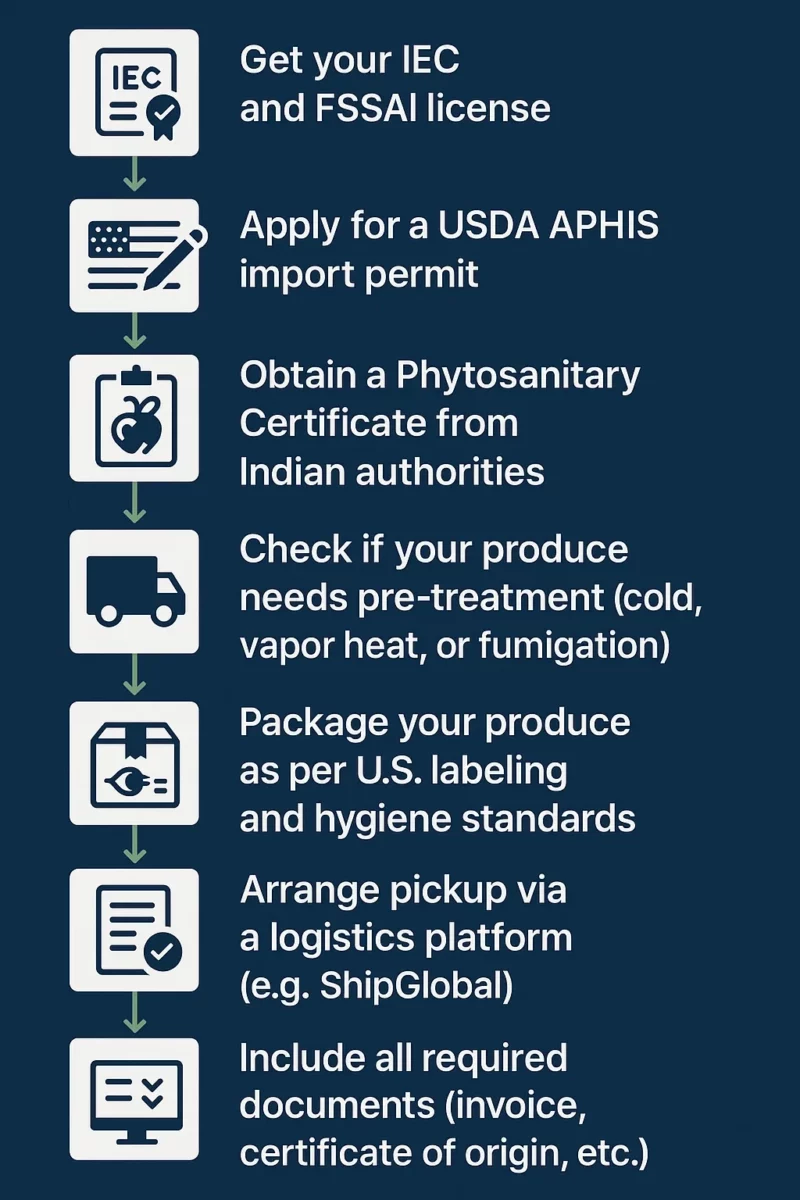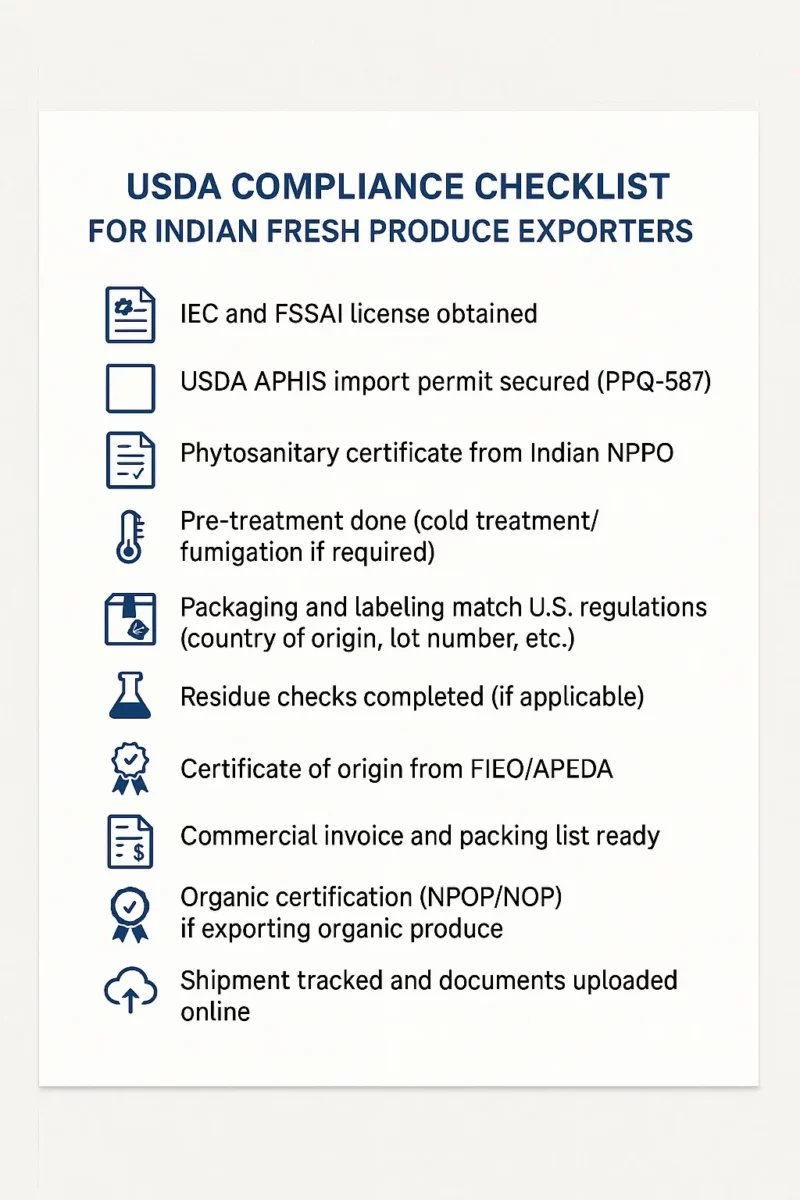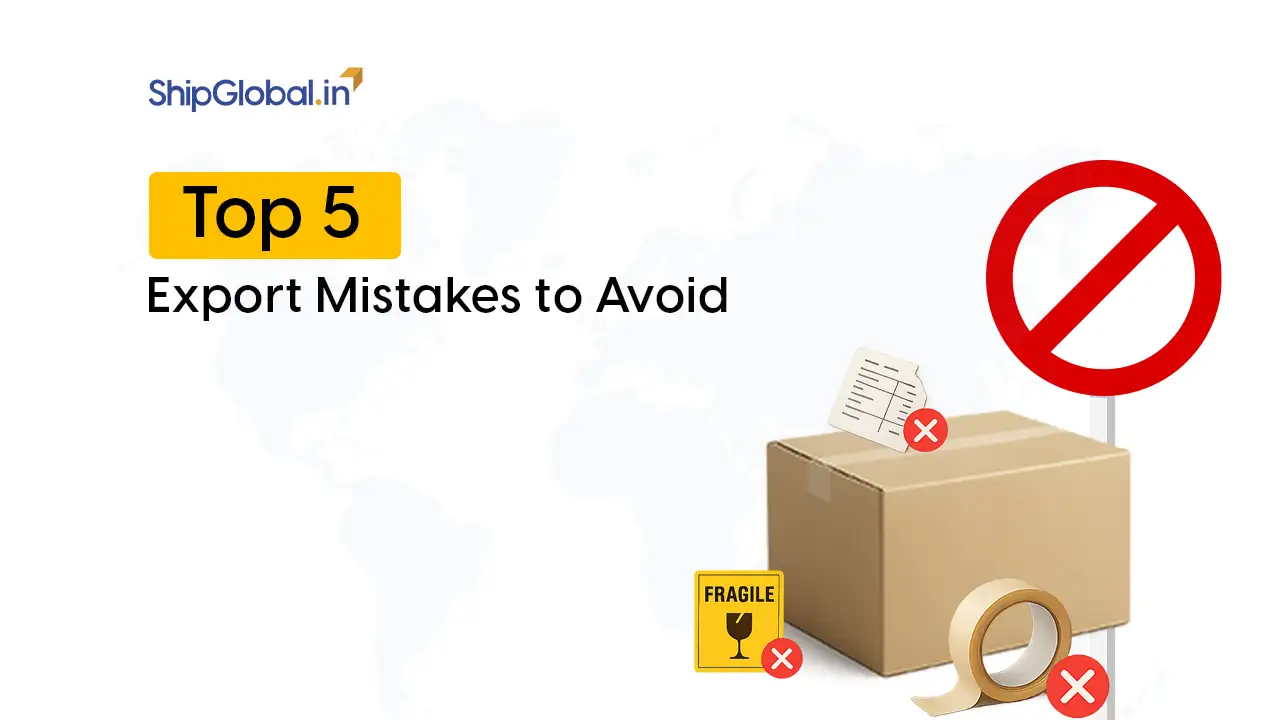Exporting fresh fruits and vegetables from India to the United States presents a major opportunity for Indian exporters. The U.S. is one of the world’s largest and most quality conscious markets, with consistent demand for tropical and seasonal produce like mangoes, pomegranates, okra, grapes, and more. However, tapping into this market isn’t as simple as just packing your products and shipping them off.
The U.S. government, particularly the United States Department of Agriculture (USDA), has strict import regulations to protect its agriculture from invasive pests, diseases, and unsafe food practices. As a result, Indian exporters must meet several technical, documentation, and quality control requirements before their shipments can enter the country.
Understanding and following these rules is not just about avoiding delays or fines—it’s about building trust with U.S. buyers and creating long-term export success. In this blog, we’ll walk you through the key USDA requirements you need to know, including permits, certifications, export documentation for fresh produce, labelling rules, cold chain logistics, irradiation treatment for exports, traceability in food exports, and the agencies involved on both sides. If you’re an exporter aiming to enter the U.S. fresh produce market, this blog will help you do it right, from the first harvest to the final delivery.

Why USDA Compliance Matters
The USDA, through agencies like APHIS (Animal and Plant Health Inspection Service), ensures that only safe, pest-free produce enters the U.S. Non-compliance can result in shipment rejection or destruction, financial penalties, delays and legal challenges, and damage to brand reputation and buyer relationships. Proper export documentation for fresh produce and adherence to post-harvest handling practices are essential to meet these standards.
Key Requirements for Indian Exporters
- Plant Permits from USDA-APHIS. Most fruits and vegetables require an APHIS import permit. This ensures the shipment won’t introduce harmful pests or diseases into the U.S. agricultural ecosystem. This process involves pest risk assessment.
- Phytosanitary Certificate from India Issued by India’s Directorate of Plant Protection, Quarantine & Storage, this certificate certifies that the produce is pest-free and meets U.S. import standards. Proper post-harvest handling practices should be followed to ensure compliance.
- Proper Labeling Your shipment must include the country of origin, lot identification, and any other USDA or FDA-required details. Ensure compliance with U.S. packaging and labeling requirements to prevent delays or rejections at ports.
- Pest and Disease Control Indian exporters must follow USDA-APHIS protocols regarding pest-free shipments. Some produce may need cold treatment, vapor heat treatment, or irradiation treatment for exports. Refer to USDA’s fresh fruit irradiation protocols for guidance.
- Pre-clearance for Certain Commodities (e.g., Mangoes) For mangoes and select produce, USDA and India’s NPPO conduct joint pre-shipment inspections to ensure all customs clearance procedures are streamlined.
- IEC (Import-Export Code) Issued by India’s DGFT, the IEC is mandatory for participating in international trade.
- FSSAI License If you are involved in preparing or packaging the produce, an FSSAI license from the Food Safety and Standards Authority of India is required.
- Documentation to Carry Your shipment must be backed by a commercial invoice, packing list, phytosanitary certificate, certificate of origin (from FIEO/APEDA), and any additional treatment certificates. Proper export documentation for fresh produce is critical for smooth customs clearance procedures.
- Organic Certification (if applicable) If exporting organic produce, get certified under India’s NPOP. Ensure USDA’s NOP recognizes certification and use a USDA-accredited certifying agent. Organic certification for exports is necessary to meet U.S. buyer expectations.
- USFDA Registration (if applicable) If the produce falls under FDA’s purview (such as processed fruits or certain fresh foods), registration with the U.S. FDA may be required.
- Residue Monitoring and Pesticide Compliance Ensure your produce complies with U.S. pesticide residue limits. Exporters should follow testing protocols by ICAR (Indian Council of Agricultural Research) and EIC (Export Inspection Council).

Reference Tool: FAVIR Database
The Fruits and Vegetables Import Requirements (FAVIR) database is your go-to resource for checking if a commodity from India is allowed, understanding specific import requirements, and viewing treatment needs and permit rules. This tool is critical when planning cold chain logistics and checking irradiation protocols.
Final Pre-Shipment Checklist
| Requirement | Status |
|---|---|
| USDA Import Permit (PPQ-587) | Required |
| Phytosanitary Certificate | Required |
| Country of Origin Labelling | Required |
| Treatment Protocol Followed | Required if applicable |
| Certificate of Origin | Required |
| Commercial Invoice & Packing List | Required |
| Organic/NPOP Certification (if applicable) | Required |
| FSSAI License (if packaging) | Required |
| Residue Testing Clearance | Required |
Pro Tips for Exporters
Exporting to the U.S. can feel complex, but the right steps can make it smooth and profitable. Here are some practical tips to help you succeed:
Work with USDA-approved importers and brokers in the U.S. They understand the rules and can help you clear customs without delays.
Use APEDA’s support for organic certification, packaging standards, and export registration. Their guidance can simplify many formalities.
Train your export team on all required documents, permits, and inspection procedures. This avoids last-minute mistakes and ensures accurate export documentation for fresh produce.
Regularly check the FAVIR database and the USDA APHIS website for updates to import rules, fresh fruit irradiation protocols, and treatment requirements.
Maintain proper records and traceability in food exports, from farm to port. This builds trust with U.S. buyers and is a must for food safety.
Conduct residue checks and ensure pesticide levels meet U.S. standards, especially for high-risk items like leafy greens and okra.
Stay ahead with certifications like Global GAP or USDA Organic if your buyers demand it. This opens up premium market opportunities.
Focus on cold chain logistics and post-harvest handling practices to preserve product quality during transit.
Conclusion
The United States is a high-potential market for Indian fresh produce exporters, with strong demand for items like mangoes, grapes, pomegranates, okra, and more. But entering this market successfully requires more than just good quality produce—it requires full compliance with USDA and APHIS regulations, proper export documentation for fresh produce, and adherence to packaging and labeling requirements.
By securing the right permits, following treatment protocols, maintaining accurate documentation, and staying informed through trusted agencies like APEDA and DGFT, you can avoid costly errors and ensure your shipments reach buyers smoothly. Cold chain logistics and traceability in food exports will play a key role in long-term success.
The effort is worth it. A compliant, professional export process builds long-term trust with importers, helps you stand out from competitors
Frequently Asked Question
Yes, the U.S. importer must get a USDA APHIS permit, even if you ship via platforms like ShipGlobal.
It’s issued by the Directorate of Plant Protection, Quarantine & Storage.
Use the USDA FAVIR database: https://acir.aphis.usda.gov/s/
Common reasons: missing documents, untreated produce, improper labels, or pests.
Yes, if it’s certified under NPOP and approved by a USDA-accredited body.








